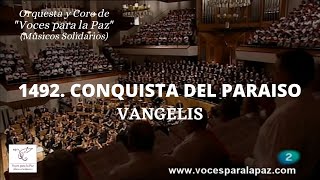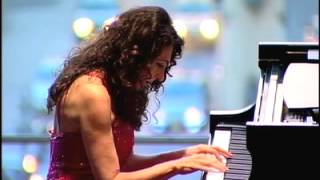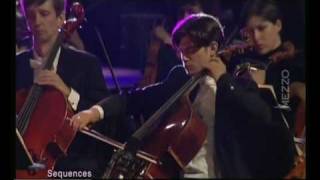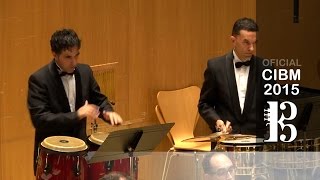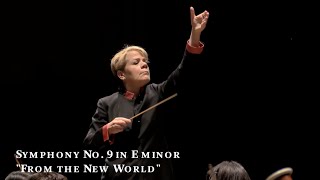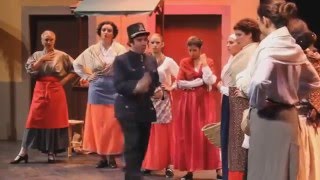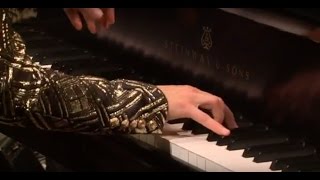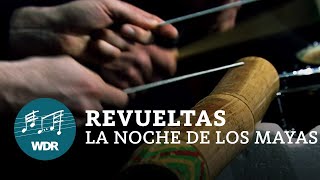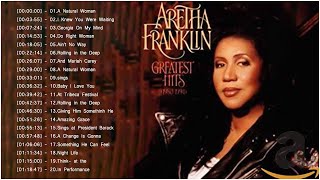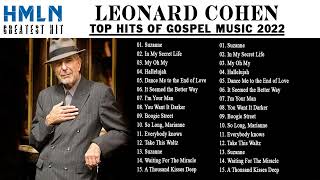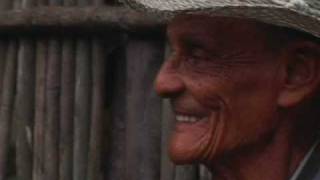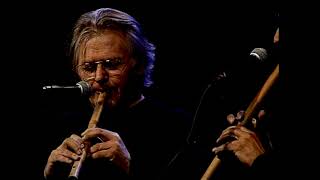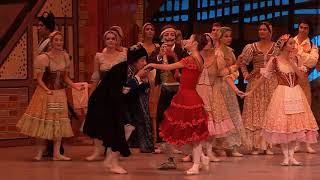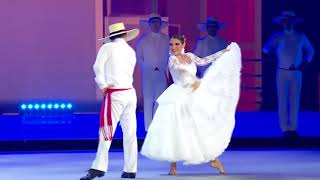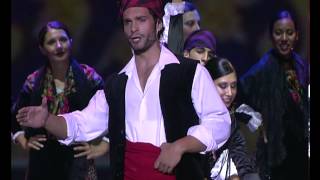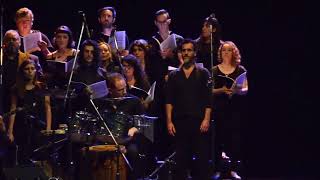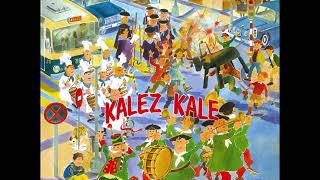On October 12 we commemorate the meeting of the West with the American continent. That same day the Patron Saint Festivities of Zaragoza are celebrated.
Recommended music videos for initiation to classical music
Vangelis (1943) is a Greek composer of electronic and orchestral music who has written primarily for theater, ballet, film and television in a greatly majestic, almost religious style; His soundtracks include Chariots of Fire, Blade Runer and 1492: The Conquest of Paradise . He has also released several albums in which he has experienced different sound sensations with allusions to classical music, jazz, electronic music and formal minimalism . Their music is characterized by the use of synthesizers and occasionally acoustic instruments to create surround sound atmospheres, in a generally grand and solemn tone. In his honor the International Astronomical Union gave his name to an asteroid: (6354) Vangelis .
Today we present the main theme of the soundtrack of 1492 The Conquest of Paradise written for choir and orchestra in the classical way and on a stubborn rhythmic basis today offered by the Voices for Peace Orchestra and Choir under the direction of maestro Miguel Roa (1944 -2016).
Alberto Ginastera (1916 - 1983) was an Argentine composer considered one of the most important of the 20th century in America . He studied at the Williams Conservatory in Buenos Aires , and between 1945 and 1947 in the United States with Aaron Copland . Among his students, it is worth highlighting Astor Piazzolla , among others. He composed three operas, ballets, orchestral pieces, choral works, concertos for soloists, sonatas and music for films, which he grouped into three periods - objective nationalism, subjective nationalism and neo-expressionism - a division that has been questioned and relativized by some specialists. In 1942 he was named a full member of the National Academy of Fine Arts and in 1989, after his death, he received the Konex Honor Award .
Argentine Dances, op. 2, is a set of three dances for solo piano written in 1937 by Alberto Ginastera .
Danza de la moza donosa , the second of the dances, is a soft dance in 6/8 time. A spicy melody meanders through the first section , creating and releasing a constant tension through the use of chromatic inflections. The second section introduces a new melody; The harmonization of this section is based on fourth and fifth intervals, which give the music a sense of expansion. This effect, which Ginastera uses frequently, reflects the immensity of the Argentine pampas. The final section returns to the opening melody, but with richer harmonization based on thirds. But unexpectedly, the piece ends with an atonal chord, instead of the expected tonic, giving a sense of uncertainty rather than conclusion.
Heitor Villa-Lobos (1887-1959) was a Brazilian conductor and composer, whose music was influenced by both Brazilian folk music and European classical music. He received some musical instruction from his father and before 1899, the year of his father's death, he had already begun to dedicate himself to music as a professional. He performed as a café musician playing the cello, although he was also an occasional guitar, clarinet and piano player. As a composer, he was notoriously prolific with a legacy of works for guitar, works for piano, 17 string quartets, 9 Brazilian Bachianas, 15 Choros for different musical groups, 12 symphonies, 18 concert works, 4 operas, 2 film soundtracks and numerous works of different kinds that include several ballet scores.
The Bachianas Brasileiras are a set of nine works written for different groups with formal remembrance of Bach . No. 5 that we present today, written for voice and eight cellos, is the best known and is performed by Amel Brahim , an Algerian soprano of Berber origin.
Arturo Márquez (1950) is a Mexican composer recognized for using Mexican musical forms and styles in his compositions. His family moved to Los Angeles in 1962; Three years later, at 16, he began studying violin, tuba, trombone and piano, which began his first compositions with an intuitive harmony accompaniment. In 1967 he returned to Navojoa (Sonora) to direct his Municipal Music Band . From 1970 to 1975 he studied piano at the National Conservatory of Mexico and in 1976, composition at the National Institute of Fine Arts ; In 1980, the French government awarded him a two-year training scholarship in Paris . In 2009 he was awarded the National Prize for Fine Arts of Mexico . “My music always has to do with what is happening around me, especially in the social and ideological part.”
The conga is a popular Cuban dance of African origin that has a syncopated rhythm and is accompanied by drums. It serves as an accompaniment to carnival troupes and originated in the festivities carried out by black slaves. Márquez composes this joyful and festive work of La Conga del Fuego Nuevo to celebrate the arrival of the new 21st century.
Today we present it in the Music Band version offered by the Municipal Symphonic Band of Albacete conducted by maestro Santos Gabaldón Fernández
Recommended classical music videos
Antonín Dvořák (1841-1904) was born in Nelahozeves , then Bohemia and now Czechia , and is considered one of the great masters of the second half of the 19th century and the main representative of Czech nationalism. In 1847 he entered the primary school of his town, where he received his first musical lessons. During the 1860s he played viola in the Bohemian Provisional Theater Orchestra , conducted from 1866 by Bedřich Smetana . In 1873 he was exalted worldwide with his collection of Slavic Dances and recognized from then on with all kinds of important international awards. Throughout his life he wrote abundant vocal, chamber, symphonic and operatic music.
Symphony No. 9 in E minor Op. 95, New World Symphony , is Antonín Dvořák 's best-known work. Composed in 1893 shortly after the composer's arrival in the USA , it is articulated in four movements: I (0´4´´) ADAGIO- ALLEGRO MOLTO .-. II (9´00´´) LONG .-. III (20´02´´) SCHERZO: MOLTO VIVACE-POCO SOSTENUTO .-. IV (26´50´´) ALLEGRO CON FUOCO. Today it is offered to us by the Peabody Symphony Orchestra directed by maestro Marin Alsop (1956), American violinist and conductor currently head of the Baltimore Symphony Orchestra , which has made her the first woman to occupy a position at this level. in USA ; She is also principal guest conductor of the São Paulo State Symphony Orchestra .
Manuel Fernández Caballero ( Murcia , 1835 - Madrid , 1906) was a Spanish composer of zarzuelas of the 19th century , of which today we suggest his best-known work, Gigantes y Cabezudos . Due to his works, he can be considered one of the master fathers of the young boy genre . The success of Los bandos de Villafrita consolidates him in his career, being the most performed work in Spain without dropping from the poster throughout the century. His works in general eloquently show great mastery of orchestration and an elegant style. In addition to zarzuelas, Fernández Caballero composed secular and religious music.
Gigantes y Cabezudos is a zarzuela in one act and three paintings, with a libretto by Miguel Echegaray y Eizaguirre and music by maestro Manuel Fernández Caballero . It premiered at the Teatro Principal of Zaragoza , with great success, on Tuesday, November 29, 1898. The Giants and Cabezudos , to which the title of the work refers, are the papier-mâché figures that parade, like a caricature , in parades, festivals and festivals, a custom of medieval origin that is still very popular in towns and cities in Aragon, Catalonia, the Valencian Community and the north of the State . The action takes place in Zaragoza during the Pilar festivities.
George Gershwin (1898-1937) was an American composer appreciated for having known how to combine jazz with classical music . From a young age he began to write his first songs, premiering his first musical on Broadway with his brother Ira as lyricist, a company that he would never leave. From the age of twenty he began to compose works designed for concert halls with which he obtained renowned successes. Aware of his formal deficits, he traveled to Paris to complete his training with Stravinsky , who, after asking him about the money earned in a year, replied that he was the one who should take classes with Gershwin . Something similar happened to Ravel , as he said, “Why do you want to be a second-rate Ravel , when you can be a first-rate Gershwin ?”
The Rhapsody in Blue , the work we present today, was originally written for solo piano and jazz band and arranged for piano and symphony orchestra in 1946 by Ferde Grofé (1892-1972), which is the version usually offered. The work aroused some controversy at its premiere; But in a short time his freshness and imagination prevailed, occupying one of the first positions of preference among the best pianists and orchestras.
Lola Astanova (1982), our soloist today, is a pianist born in Uzbekistan . At the age of eight he was already touring as a concert artist, surprising audiences across half of Europe with his technique and childlike imagination. She has performed in the best venues in the world both alone and under the baton of the main orchestra conductors.
Silvestre Revueltas (18991-1940) was a modernist Mexican composer of symphonic music of the first half of the 20th century , violinist and orchestra director. Appointed by Carlos Chávez as assistant director of the Mexican Symphony Orchestra , it was difficult for him to dedicate himself to composition due to his lack of self-esteem and because due to his leftist ideas he was long cornered by Mexican society. He traveled to Spain in the middle of the Civil War as personal support for republicanism; and upon his return he writes Sensemayá . He is currently considered one of the most influential composers in Mexico , due to the scope and originality of his chamber music and certain works that have become a very important part of the orchestral repertoire.
The Night of the Mayans is a musical composition by Silvestre Revueltas written as the soundtrack of the film of the same name that had two subsequent arrangements: one by Paul Hindemith and another, the one we offer today, by José Ives Limantour , a work made 20 years after the death of the composer. Limantour structured the music of the film in the form of a symphony, including pre-Hispanic percussion instruments and structuring it in the following four movements I (0´00´´) NOCHE DE LOS MAYAS, Molto sostenuto .-. II (6´33´´) NIGHT OF JARANAS, Scherzo .-. III (12'00'') YUCATAN NIGHT, Andante espressivo .-. IV (17'53'') NIGHT OF ENCHANTMENT, Theme and variations . Today it is offered to us by the WDR Symphony Orchestra under the baton of the Russian maestro Semyon Bychkov .
Recommended music videos for all tastes
Aretha Louise Franklin (1942-2018)123 was an American soul, R&B and gospel singer. She was the greatest exponent of Soul and one of the greatest gospel transmitters of all time. In the mid-1960s, she established herself as a female Soul star, something she used in favor of racial rights in the USA , being an influential element within the racial and women's liberation movement. In 1987, she became the first woman to be inducted into the Rock and Roll Hall of Fame . She was selected in first place in The 100 Greatest Singers of All Time according to Rolling Stone in 2008. She was awarded 18 Grammy Awards.
Leonard Cohen (1934-2016) was a Canadian poet, novelist and singer-songwriter who in his songs touched on very diverse themes, but focused again and again on love and religion. In 1967 Cohen moved to the USA to begin a career as a folk singer-songwriter. Her song " Suzanne " was a notable hit with Judy Collins , and for many years it was her most covered song; after which he made countless recordings and successful tours around the world. His deep, gravelly voice fits perfectly with his existential pessimism. He was inducted into the US Rock and Roll Hall of Fame and the Canadian Music Hall of Fame ; and in 2011 he was awarded the Prince of Asturias Award for Literature.
Totó la Momposina (1940) was a Colombian singer born into a family of musicians; Song and dance were something congenital for her that she expressed from the earliest age. Their music combines African and indigenous elements as happened during the time of Spanish colonization in America ; hence the rhythms that were born from that fusion were multiple. After studying at the Conservatory of the National University of Colombia , he dedicated himself to traveling through Europe and studying at the Sorbonne University in Paris , as well as in other institutions in Santiago de Cuba and Havana . She is one of the most recognized Colombian singers in Latin America and has an Honorary Doctorate in Education from the National Pedagogical University of Colombia .
Quilapayún (from mapundungun kila, 'three', and payún, 'beards') is a Chilean folk music band formed in Santiago on July 26, 1965, which was part of the so-called Nueva Canción Chilena during the 1960s and which remains valid to date. During the government of Salvador Allende they were appointed cultural ambassadors, touring Europe and achieving great success in Argentina and Uruguay . Quilapayún was on tour in Europe when Augusto Pinochet 's coup d'état occurred; After the coup, the group remained in France and began its exile that would last indefinitely. After the normalization of Chilean politics and the return of its members, they were divided into two groups due to internal dissidence.
Recommended peculiar videos
Ludwig Minkus (1826-1917) was an Austrian violinist and composer of ballet music. He studied at the Vienna Conservatory . At that time, while he composed music for ballet, he performed as a violin soloist and founded an orchestra that would compete with that of the young Johann Strauss . In 1846, Minkus moved to Paris and that same year the ballet Paquita premiered, with music by Édouard Deldevez assisted by Minkus . In 1847 he settled in Russia ; In 1861, he joined the Bolshoi Theater Orchestra as a violinist; a year later, as director and two years later he was appointed composer of the Bolshoi Ballet . Although permanently settled in Russia , he maintained his ties with Paris and in 1866 he traveled to the French capital to compose the new ballet La Source .
Don Quixote is a ballet with a prologue and four acts by Ludwig Minkus and choreography and libretto by Marius Petipa , which would be premiered in 1869 at the Bolshoi Theater , with enormous success from both critics and the public; ballet whose plot is based on the novel by Miguel de Cervantes and in particular on the "Camacho weddings" ( Gamache in the ballet), an episode narrated in chapter XIX of the second part, in which the romance between the barber is recounted Basilio and the young Quiteria (Kitri in the ballet).
Alicia Alonso (1920-2019) was a choreographer and teacher, founder and director of the National Ballet of Cuba . Relevant personality in the history of stage dance, leading figure of classical ballet on an international level and distinguished personality of Cuban national culture. The art of this legendary dancer has been acclaimed for decades by diverse audiences and specialized critics around the world. She achieved the rank of Prima ballerina assoluta , due to the unlimited spectrum of her art, a category historically held by few dance artists, and which in the tradition of classical dance defines the highest stylistic, expressive and technical qualities in the exercise of this art. . In 1948 she founded the Alicia Alonso Ballet in Havana , today the National Ballet of Cuba . (Extracted from the Website of the National Ballet of Cuba)
The Marinera is one of the dances of Peru , a symbiosis of different dances of Spanish origin and others of indigenous origin to the point of acquiring its own unequivocally Peruvian personality. It is a mixed couple dance that, like the Chilean cueca , uses a white handkerchief in their right hand.
The northern marinera is a Peruvian cultural expression. This dance is a variation of the marinera itself, considered a cultural heritage of humanity. The Peruvian researcher Bertha Saravia points out that the northern marinera is understood as a “dance of a mixed couple, artistic, beautiful and joyful in the execution of steps and figures, in which the men fall in love with their personality and chivalry, while the lady flirts suggestively. ”.
It is manifested in Trujillo , a city known as the National Capital of Marinera and the origin of that style in the 19th century , as it is the main headquarters of the National Marinera Contest that draws crowds of contestants, personalities, tourists and national spectators.
La Concheperla , also called La decana , is a Peruvian sailor recovered in 1892 by José Alvarado " Alvaradito ".
Tomás Bretón (1850-1923) was a Spanish composer and violinist born in Salamanca. He completed his first musical studies at the San Eloy School of Nobles and Fine Arts in his hometown. At the age of 16, he moved to Madrid , where he played in zarzuela theater orchestras and continued his apprenticeship at the Royal Conservatory under the teachings of maestro Emilio Arrieta , where in 1872 he received, together with Ruperto Chapí , the first prize for composition. In 1880 he received a scholarship to study abroad, residing in Rome, Milan, Vienna and Paris between 1881 and 1884. In 1901 he assumed the direction of the Madrid Conservatory , a position he held until his retirement in 1921. Prolific composer in very different genres and styles, he also wrote numerous zarzuelas.
La Dolores is an opera by Tomás Bretón premiered on March 16, 1895 at the Teatro de la Zarzuela in Madrid , according to a libretto written by Tomás Bretón himself, based on the play by his friend Feliú y Codina , and making even more popular the myth of “La Dolores”.
La Jota Aragonesa is the most identifying expression of song and dance of the Aragonese region; Known and admired inside and outside its borders, it has attracted foreign composers and choreographers such as Glinka , Liszt, Moiseyev ... and others who have produced some work of this genre. The Great Jota that we offer today belongs to the opera La Dolores by Tomás Bretón.
Ariel Ramírez (1921-2010) is one of the most relevant figures of Argentine nativism. He studied piano and composition and at the age of 20, encouraged by Atahualpa Yupanqui , he traveled throughout the country contacting the different musical expressions of each region. Nine years later he made a four-year trip through Europe offering several concerts of music from his homeland; On his return to Argentina he formed a company made up of musicians and dancers with which he would tour the country for 20 years; After this stage he performed as a piano soloist in countless recitals in which he interspersed his own works.
He wrote numerous songs and works among which the Creole Mass stands out, which today we have the opportunity to enjoy. Its structure is made up of five movements, each of which is a replica of some traditional Argentine rhythm or musical form within the most orthodox Catholic liturgical plan: I () Kyrie .-. II (4'05'') Glory .-. III (10´35´´) Creed .-. IV (14'53'') Sanctus and V (17'28'') Bis.
Today's choreographed performance is offered to us by the National Folkloric Ballet of Argentina in the absence of the Agnus Dei .
Recommended music videos for children
Various Wikipedia articles have been used to write these texts.
The texts of Videomusicalis are written in Basque, Spanish and English.





